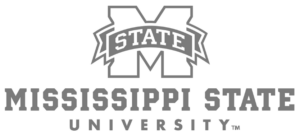Researchers work to revolutionize how health care institutions clean surfaces
“Technology boot camp” is how Virender Sharma, PhD, professor at the Texas A&M Health Science Center School of Public Health, describes his experience at Innovation Corps (I-Corps), a National Science Foundation (NSF) program that helps scientists bring their discoveries out the laboratory and toward the commercial market.
“One thing I discovered during this process is that the science is only 20 percent of it,” Sharma said. “The other 80 percent is just business—how you sell it, how you make deals.”
Sharma’s work using ferrate ions—which are iron ions that have lost four or more of their electrons—as a disinfectant has been shown to be extremely successful in the lab, and he was starting to wonder if it was time to make a commercial product.
“I think Dr. Sharma was disappointed when he found out that I wasn’t a consultant who would tell him if his technology has value,” said Chuck Hinton, director of NSF I-Corps at Texas A&M, part of the Mays Business School’s Center for New Ventures and Entrepreneurship. “He was going to have to figure that out for himself, and that is the key of this program.”
Although other Texas A&M Health Science Center researchers have participated in regional I-Corps programs, Sharma and his team are the first to participate in a national cohort. The other members of the team were Jashanpreet Singh, PhD, a postdoctoral fellow in Sharma’s lab who served as the entrepreneurial lead on the project, and Chetan Jinadatha, MD, MPH, an assistant professor at the Texas A&M College of Medicine and chief of infectious diseases at the Central Texas Veterans Health Care System in Temple.
Jinadatha’s work focuses on infections acquired in hospitals and other health care settings, which sicken 722,000 people and kill about 75,000 per year, according to the Centers for Disease Control and Prevention (CDC). Examples of this type of infection include Methicillin-resistant Staphylococcus aureus (MRSA) and Clostridium difficile. “Between 40 and 50 percent of such infections are related to improper cleaning of surfaces,” Jinadatha said.
Current disinfectants are effective at cleaning surfaces but have an off-putting odor and can cause damage to hospital equipment and materials and irritation of eyes and skin. “You also have to read the directions carefully,” Jinadatha said. “They have to be sprayed on a surface, left to sit for a period of time, and then wiped off, or they do not disinfect properly.”
The team completed more than 110 in-person interviews in five weeks with stakeholders and potential customers, including hospital environmental services workers (housekeepers), infection control practitioners, physicians and hospital administrators.
“One great thing we learned is that so many fellow Aggies want to help you,” Sharma said. “They were ready to meet with us, and I was really surprised about how nice everyone was and generous with their time and opinions.” Through this extensive interview process, the team was able to learn what issues people were having with existing cleaning products and what a new product would have to do in order to make their lives or jobs easier.
“This program is invaluable for helping faculty members evaluate the market opportunity and customer need for their technology,” Hinton said.
In this case, Sharma and the rest of the team found that because busy people tend not to have time to spray a disinfectant and let it sit for several minutes, the infectious pathogens aren’t being destroyed, and they go on to infect the next patient.
“I was surprised that there is a real problem with these disinfectants in hospitals,” Sharma said. “They’re often not being properly used, and so they’re not working.”
Ferrate doesn’t have these limitations. Sharma was recently granted a United States patent for his liquid ferrate technology, which solved the inherent issues related to stability of ferrate in solution form, and now plans to test it for its commercial viability as a surface disinfectant for health care facilities. The team sees the next step as the creation of a spray disinfectant using the ferrate solution.
“There is interest in the product, but we need more data before we can start a small business or collaborate with existing companies to commercialize the product,” Sharma said. The team’s next step is to apply for an Accelerating Innovation Research (AIR) grant that will allow them to further develop their research. Sharma and his team are also working with the Office of Technology Translation on a strategy for additional intellectual property protection and to further develop their plans for commercialization of the technology for healthcare, as well as other applications.
“I’m even more committed to ferrate than I was before,” Sharma added.
Singh was awarded best entrepreneurial lead and the most improved. “That’s really a big deal,” Hinton said. “I’m really extremely proud of this team. They went in prepared and worked hard and ended up being the best one there.”
By Christina Sumners
Vital Record – News from the Texas A&M Health Science Center








